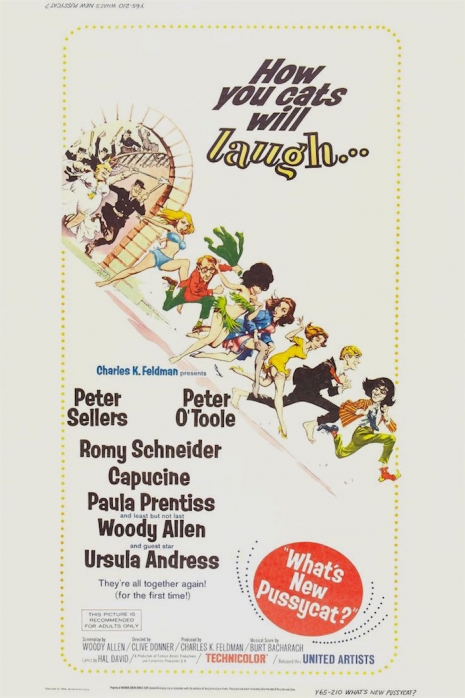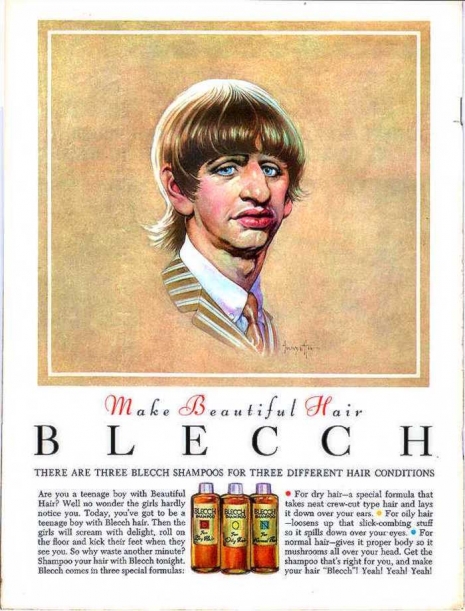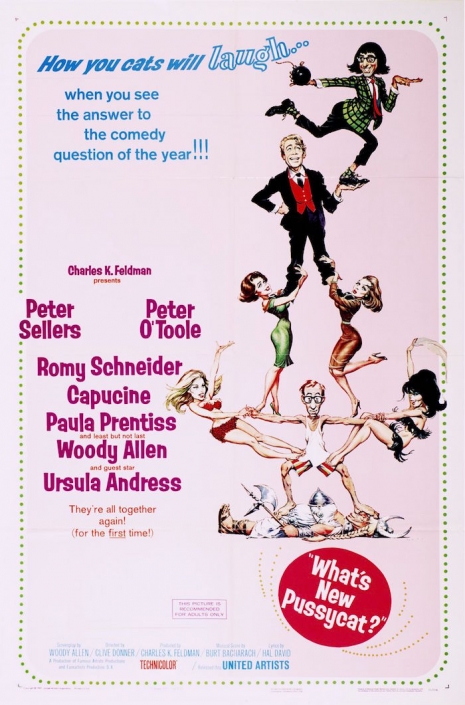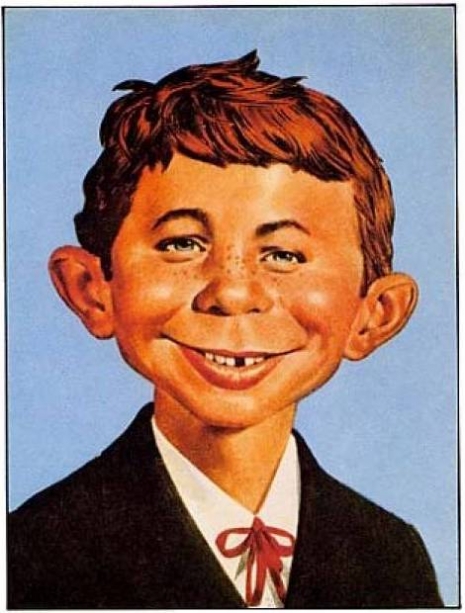
‘What’s New Pussycat?’ (1965).
It was a painting of Ringo Starr that changed Frank Frazetta‘s life. Frazetta was a comic strip artist contributing to EC Comics, National Comics (later known as DC Comics) and Avon Comics. He was drawing Buck Rogers, Li’l Abner, Johnny Comet and helping out on Flash Gordon. Occasionally he would supply his talents to MAD magazine. That’s how he produced a painting of Ringo Starr for a spoof shampoo ad for the magazine. The picture caught the attention of PR guys at United Artists who commissioned Frazetta to produce the poster artwork for their Peter Sellers, Peter O’Toole, Woody Allen film What’s New Pussycat? For one day’s work, Frazetta earned his annual salary. It changed his life. The success of What’s New Pussycat? led to further poster commissions for a whole slate of movies: After the Fox, The Fearless Vampire Killers, The Night They Raided Minsky’s and The Gauntlet.
The movie work led to book cover work. He painted some of the most iconic covers for Edgar Rice Burroughs’ Tarzan and John Carter novels. And most famously redefined Conan the Barbarian as a bulging muscled, rugged behemoth. Frank Frazetta created a whole world of these Sword and Sorcery paintings which defined the genre and became synonymous with his name.
However, I do prefer Frazetta’s movie poster artwork which beautifully captures the whole joyful spirit of the swinging sixties, before progressing towards his more recognizable style in the seventies and eighties.

Frank Frazetta’s painting of Ringo Starr for MAD magazine (1964).

‘What’s New Pussycat?’ (1965).
More fabulous Frank Frazetta movie posters, after the jump…









